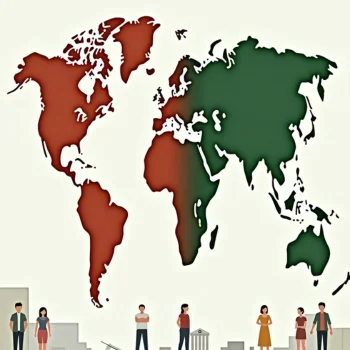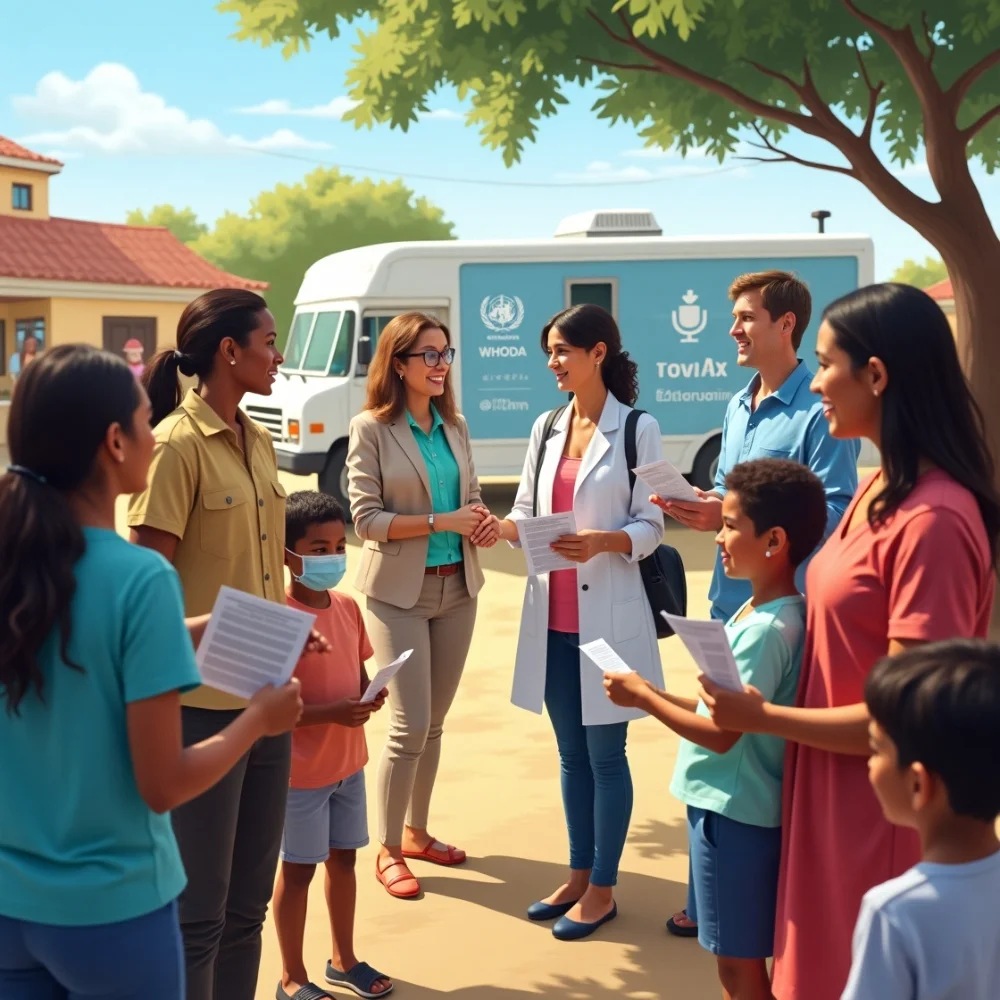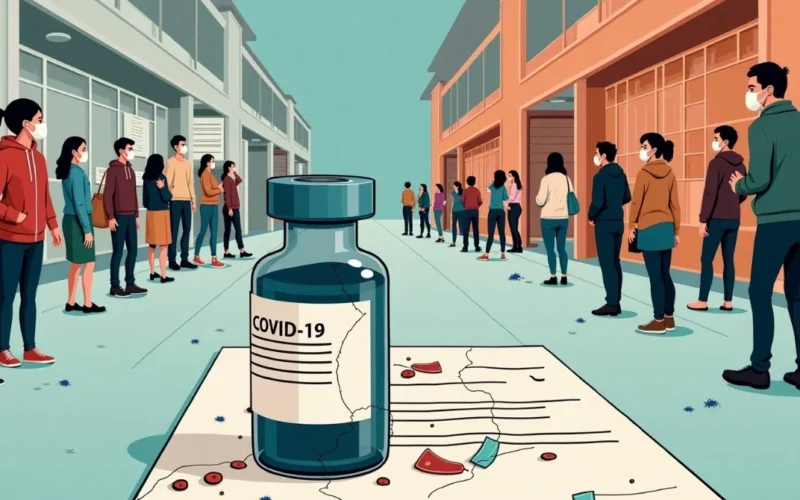Table of Contents
Introduction
As the world moves further away from the initial panic of the COVID-19 pandemic, COVID-19 vaccination rates are taking an unexpected and concerning turn in 2025, raising public health concerns around the globe. With fatigue, misinformation, and changing public sentiment at play, experts are closely monitoring the situation. In this article, we’ll uncover where the rates are falling, which groups are most affected, and how governments and health organizations are responding.
Global Vaccination Rates Take a Surprising Turn

1. Countries with the Sharpest Declines
In 2025, some of the most developed nations have reported a steep drop in COVID-19 vaccination rates. The United States, the United Kingdom, Germany, and France have all seen noticeable declines in booster uptake. While these countries once led the global vaccine rollout, they are now facing rising resistance from portions of their populations.
In contrast, developing countries show a mixed picture. Nations in South Asia and parts of Africa have maintained moderate levels, largely due to continued awareness campaigns and external support from organizations like the World Health Organization and Gavi. However, challenges like vaccine accessibility, storage logistics, and limited health resources still impact full coverage in rural and underserved areas.
2. Age Groups Most Affected
One of the most visible patterns in the 2025 vaccination data is the decline among younger adults aged 18 to 35. This group reports the lowest booster rates compared to any other demographic. Many in this age bracket feel less vulnerable to the virus and question the need for additional doses.
Surprisingly, older adults, once considered the highest-priority group, have also shown declining interest in boosters. Reasons include skepticism about vaccine necessity after receiving multiple doses, confusion over new guidelines, and limited mobility to reach vaccination centers. These shifts across key age groups are creating new challenges for public health efforts.
Why Are People Skipping the Vaccine in 2025?
1. Rising Vaccine Fatigue
Vaccine fatigue has become a major factor behind declining COVID-19 vaccination rates in 2025. After more than four years of receiving regular updates and seasonal booster recommendations, many people are simply tired. The public is experiencing mental and emotional exhaustion from constant health warnings and changing medical advice.
Additionally, as hospitalizations and death rates have dropped compared to the earlier waves of the pandemic, people no longer feel the same level of urgency. Many believe the threat has passed, leading to reduced motivation for getting vaccinated. This false sense of security has resulted in lower participation in updated vaccine campaigns.
2. Misinformation and Distrust
Another powerful reason behind the drop in vaccine uptake is the spread of misinformation. Social media continues to amplify conspiracy theories, false claims about vaccine safety, and misleading data. Despite efforts from trusted medical voices, fake news often spreads faster and wider than factual information.
Furthermore, inconsistent messaging from health agencies over the past few years has weakened public trust. Confusion about vaccine schedules, changes in eligibility, and evolving recommendations have led many to feel unsure or suspicious. When trust is low, compliance with health measures tends to follow the same pattern.
Public Health Impact of Declining Vaccination

1. Rise in COVID-19 Hospitalizations
The sharp decrease in vaccination is starting to show real-world consequences. In countries with low booster uptake, hospitals are reporting a steady rise in COVID-19 cases, particularly among unvaccinated individuals and those with compromised immunity. While these may not always result in death, severe cases still require medical attention and strain healthcare systems.
Healthcare workers are again being pushed to capacity in certain regions, especially during peak seasons. As resources are redirected to manage the growing number of COVID-19 patients, it places additional pressure on services for other diseases and emergencies.
2. Threat of New Variants
Lower vaccination coverage also poses a greater risk of virus mutation. When fewer people are protected, the virus has more chances to spread and evolve. Experts warn that a more contagious or severe variant could emerge if this trend continues unchecked.
To combat this, global health organizations are investing in surveillance systems to detect and track new strains early. The race between vaccination and mutation continues, and declining coverage could tip the balance in the wrong direction.
What Governments Are Doing in Response?
1. New Awareness Campaigns
Governments are stepping up efforts to reverse the downward trend. Many are launching fresh public awareness campaigns using social media, television, and community influencers to reach hesitant individuals. The messaging focuses on real stories, scientific facts, and the importance of long-term protection.
In some areas, mobile vaccination clinics have returned, offering convenience for people who find it hard to travel. Financial incentives, such as grocery vouchers or transport credits, are also being tested in cities where turnout is especially low.
2. Policy Shifts and Funding Boosts
Recognizing the risk, several countries are now prioritizing high-risk populations once again. New funding is being directed toward care centers for older adults, schools, and community health networks to ensure vaccines are easily accessible and free of cost.
Some health departments are simplifying the vaccination schedule to reduce confusion. Instead of multiple updates per year, they are moving toward a seasonal model, similar to flu shots, with clear, consistent timelines.
Can Vaccination Rates Be Recovered in 2025?

1. What Experts Suggest?
Public health experts believe that rebuilding trust and simplifying communication is the key to increasing vaccination rates. They recommend placing more effort into grassroots outreach programs led by local healthcare workers, teachers, and respected community leaders.
Educational materials should focus on addressing common fears and myths while promoting the benefits of protection for families and communities. More than ever, consistent and honest communication is crucial to change public behavior.
2. The Role of Global Collaboration
International organizations like the World Health Organization (WHO) and COVAX are playing a vital role in addressing the decline in global vaccine coverage. They are not only supplying vaccines but also helping countries design effective campaigns based on successful models from around the world.
Collaboration between governments, non-profits, and the private sector is helping build trust in systems that had been losing public confidence. Sharing data, resources, and strategies is making a difference, especially in regions still struggling with access and public hesitation.
Conclusion
The drop in COVID-19 vaccination rates in 2025 is more than just a number; it reflects a shift in global attitude, trust, and public health priorities. While challenges like misinformation, fatigue, and policy confusion play a role, there is still time to change direction. Through targeted campaigns, strong leadership, and global cooperation, it’s possible to protect communities and prevent future waves. As we move forward, the focus must stay on communication, education, and equitable access to ensure no one is left behind.






